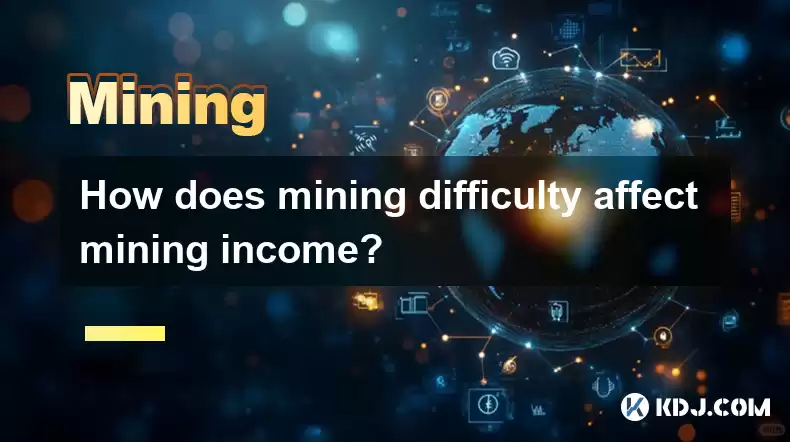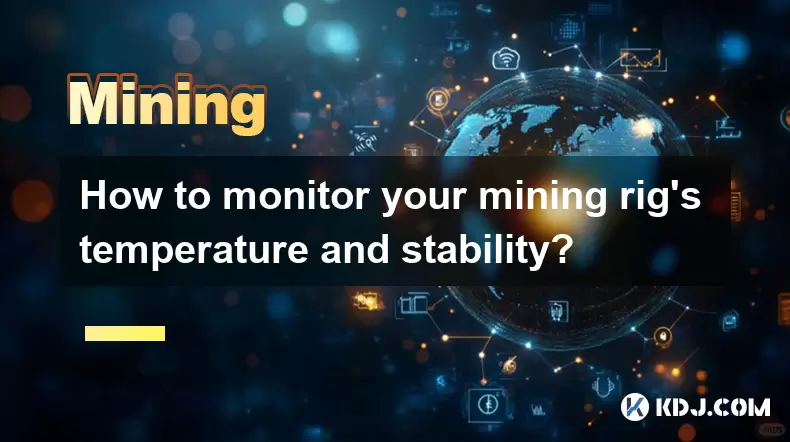-
 Bitcoin
Bitcoin $116400
-0.36% -
 Ethereum
Ethereum $4033
3.40% -
 XRP
XRP $3.302
-1.26% -
 Tether USDt
Tether USDt $1.000
-0.02% -
 BNB
BNB $796.1
1.67% -
 Solana
Solana $177.8
1.89% -
 USDC
USDC $0.9999
0.00% -
 Dogecoin
Dogecoin $0.2314
4.09% -
 TRON
TRON $0.3381
0.14% -
 Cardano
Cardano $0.7989
1.22% -
 Stellar
Stellar $0.4496
-1.84% -
 Chainlink
Chainlink $20.42
9.42% -
 Hyperliquid
Hyperliquid $41.17
0.88% -
 Sui
Sui $3.914
3.77% -
 Bitcoin Cash
Bitcoin Cash $584.7
1.52% -
 Hedera
Hedera $0.2632
-0.54% -
 Avalanche
Avalanche $24.09
3.40% -
 Ethena USDe
Ethena USDe $1.001
-0.02% -
 Litecoin
Litecoin $123.2
1.33% -
 Toncoin
Toncoin $3.318
-0.04% -
 UNUS SED LEO
UNUS SED LEO $8.984
-0.05% -
 Shiba Inu
Shiba Inu $0.00001323
2.85% -
 Uniswap
Uniswap $10.90
4.41% -
 Polkadot
Polkadot $3.999
3.34% -
 Dai
Dai $1.000
0.01% -
 Cronos
Cronos $0.1630
9.64% -
 Bitget Token
Bitget Token $4.484
0.82% -
 Monero
Monero $272.4
2.44% -
 Pepe
Pepe $0.00001173
6.03% -
 Aave
Aave $290.8
2.88%
How does mining difficulty affect mining income?
Higher mining difficulty directly affects mining income by reducing block production rates and increasing operating costs, necessitating careful optimization strategies for miners to maximize profitability.
Feb 20, 2025 at 03:24 pm

Key Points:
- Understanding Mining Difficulty
- Calculation of Mining Difficulty Adjustments
- Impact of Mining Difficulty on Mining Income
- Strategies for Optimizing Mining Income in Varying Difficulty Conditions
How does mining difficulty affect mining income?
Mining difficulty, a crucial parameter in cryptocurrency mining, significantly influences the potential income that miners can earn. As the difficulty rises, the computational effort required to solve complex mathematical puzzles that validate transactions also increases. This article delves into the intricate relationship between mining difficulty and mining income, exploring its implications and offering insights into strategies for optimizing miner earnings.
1. Understanding Mining Difficulty
Mining difficulty serves as a measure of the computational challenge involved in mining a cryptocurrency. It is expressed as a hash rate, which represents the number of hashes that must be generated per second to find a valid block. The network automatically adjusts the mining difficulty periodically to maintain a consistent block production time, ensuring that new blocks are added to the blockchain at a predictable rate.
2. Calculation of Mining Difficulty Adjustments
Typically, mining difficulty adjustments occur every two weeks for Bitcoin and every 24 hours for Ethereum. The adjustment is calculated based on the difference between the actual block production time and the target block production time. If blocks are produced faster than the target, the difficulty increases, making it more challenging to mine. Conversely, if block production is slower than the target, the difficulty decreases, providing relief to miners.
3. Impact of Mining Difficulty on Mining Income
Mining difficulty directly affects miner income through two primary mechanisms:
a) Reduced Block Production Rate: Increased difficulty slows down the block production rate, causing miners to discover fewer valid blocks over time. This results in a corresponding reduction in the number of block rewards earned.
b) Increased Operating Costs: As difficulty rises, miners require more powerful and energy-efficient hardware to maintain their hashrate. This translates into higher electricity consumption and equipment costs, increasing mining expenses.
4. Strategies for Optimizing Mining Income in Varying Difficulty Conditions
To maximize profitability despite fluctuations in mining difficulty, miners can consider the following strategies:
a) Choose a Suitable Cryptocurrency: Different cryptocurrencies have varying mining difficulties, with some being more accessible to individual miners. Researching and selecting cryptocurrencies with lower difficulty levels can increase earning potential.
b) Invest in Efficient Equipment: Investing in high-quality mining rigs specifically designed for efficient cryptocurrency mining can help optimize hash rates and reduce energy consumption, offsetting the effects of increasing difficulty.
c) Join Mining Pools: Solo mining can be highly unpredictable, especially in high-difficulty environments. Joining mining pools allows miners to combine their hashrates, increasing their chances of discovering valid blocks and earning consistent rewards.
d) Monitor Difficulty Trends: Closely monitoring the mining difficulty of the target cryptocurrency can help miners adjust their strategies accordingly. Predicting future difficulty adjustments based on past trends can inform decisions related to hardware upgrades or mining pool changes.
e) Consider Cloud Mining: For those lacking the infrastructure or technical expertise for physical mining, cloud mining services provide an alternative way to participate in cryptocurrency mining without incurring significant capital expenditure.
FAQs
Q: How frequently is mining difficulty adjusted?
A: The adjustment frequency varies depending on the cryptocurrency. For instance, Bitcoin's difficulty is adjusted every two weeks, while Ethereum's difficulty adjusts every 24 hours.
Q: How can I calculate the mining difficulty adjustment?
A: The specific formula for mining difficulty adjustment varies across different cryptocurrencies. Check the official documentation or network parameters of the target cryptocurrency for the precise calculation method.
Q: Why is mining difficulty increasing?
A: Mining difficulty increases when blocks are produced faster than the target block production time. This can occur due to an influx of new miners, technological advancements, or other factors that enhance the overall hash rate of the network.
Q: How does mining difficulty impact mining profitability?
A: Higher mining difficulty reduces profitability by decreasing the block production rate and increasing operating costs. This can make solo mining less lucrative, especially in high-difficulty environments.
Q: Are there any ways to offset the effects of increasing mining difficulty?
A: Yes, miners can invest in efficient equipment, join mining pools, monitor difficulty trends, and consider cloud mining to mitigate the impact of rising mining difficulty.
Disclaimer:info@kdj.com
The information provided is not trading advice. kdj.com does not assume any responsibility for any investments made based on the information provided in this article. Cryptocurrencies are highly volatile and it is highly recommended that you invest with caution after thorough research!
If you believe that the content used on this website infringes your copyright, please contact us immediately (info@kdj.com) and we will delete it promptly.
- Shiba Inu (SHIB) in the Crypto Landscape: Community, Trends, and Future Outlook
- 2025-08-09 20:30:12
- Lasers in Modern Warfare: Iron Beam and the Future of Defense
- 2025-08-09 20:30:12
- Maxi Doge Presale: The Meme Coin That's Pumping Iron and Prices!
- 2025-08-09 19:10:11
- Rare Coin Warning: Don't Get Fooled by That 1p Coin!
- 2025-08-09 18:50:12
- Cardano, Unilabs, and Tron Price: Decoding the Latest Crypto Buzz
- 2025-08-09 18:30:12
- Aerodrome Finance: Price Targets and the Bullish Channel - What's Next?
- 2025-08-09 18:50:12
Related knowledge

What is "proof-of-work" and how does it relate to mining?
Aug 07,2025 at 02:03pm
Understanding the Concept of Proof-of-WorkProof-of-work (PoW) is a consensus mechanism used in blockchain networks to validate transactions and secure...

What are the differences between mining on Windows vs. Linux?
Aug 06,2025 at 11:29pm
Overview of Cryptocurrency Mining PlatformsCryptocurrency mining involves using computational power to solve complex cryptographic puzzles and validat...

How to use an old computer for cryptocurrency mining?
Aug 07,2025 at 12:42pm
Understanding the Feasibility of Using an Old Computer for MiningUsing an old computer for cryptocurrency mining may seem outdated, but it is still te...

Can you mine cryptocurrency using solar power?
Aug 07,2025 at 12:00am
Understanding the Basics of Cryptocurrency MiningCryptocurrency mining involves validating transactions on a blockchain network by solving complex cry...

How to monitor your mining rig's temperature and stability?
Aug 09,2025 at 09:43am
Understanding the Importance of Temperature Monitoring in Mining RigsMaintaining optimal temperature levels in a mining rig is essential for long-term...

How to build a mining rig inside a PC case?
Aug 06,2025 at 11:01pm
Understanding the Basics of a Mining Rig in a PC CaseBuilding a mining rig inside a PC case involves transforming a standard computer chassis into a d...

What is "proof-of-work" and how does it relate to mining?
Aug 07,2025 at 02:03pm
Understanding the Concept of Proof-of-WorkProof-of-work (PoW) is a consensus mechanism used in blockchain networks to validate transactions and secure...

What are the differences between mining on Windows vs. Linux?
Aug 06,2025 at 11:29pm
Overview of Cryptocurrency Mining PlatformsCryptocurrency mining involves using computational power to solve complex cryptographic puzzles and validat...

How to use an old computer for cryptocurrency mining?
Aug 07,2025 at 12:42pm
Understanding the Feasibility of Using an Old Computer for MiningUsing an old computer for cryptocurrency mining may seem outdated, but it is still te...

Can you mine cryptocurrency using solar power?
Aug 07,2025 at 12:00am
Understanding the Basics of Cryptocurrency MiningCryptocurrency mining involves validating transactions on a blockchain network by solving complex cry...

How to monitor your mining rig's temperature and stability?
Aug 09,2025 at 09:43am
Understanding the Importance of Temperature Monitoring in Mining RigsMaintaining optimal temperature levels in a mining rig is essential for long-term...

How to build a mining rig inside a PC case?
Aug 06,2025 at 11:01pm
Understanding the Basics of a Mining Rig in a PC CaseBuilding a mining rig inside a PC case involves transforming a standard computer chassis into a d...
See all articles

























































































